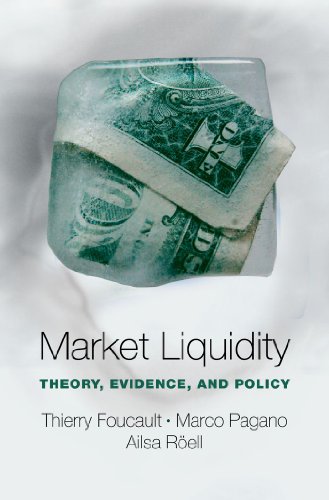Sublime
An inspiration engine for ideas
“Deep liquidity” means preserved value when trading between tokens. “Thin liquidity” means loss of value when trading between tokens.
BanklessDAO • Liquidity is bandwidth on Bankless
By providing in this matter, you can provide liquidity for the entire range of prices (i.e. [0, ∞]) and always have both assets to execute trades.
Part 1: A brief overview of 1st generation AMMs
In other words, you can trade at the price of a market when there is deep liquidity. With thin liquidity, the price moves significantly as you interact with it.
BanklessDAO • Liquidity is bandwidth on Bankless

In the internet of value, greater amounts of liquidity are necessary to do more things and move additional value. Thin liquidity means participants will not move greater value, because the value loss to them is too high. Imagine an economy where value cannot flow freely because every time it moves, exchanges, or transfers; it loses value. This is... See more
BanklessDAO • Liquidity is bandwidth on Bankless
On our calculations, as much as three- quarters of primary transactions now consist of debt roll-overs rather than new capital raising. These refinancings require liquidity in the form of balance sheet capacity within the financial sector. In addition, liquidity itself needs good-quality debts, like US Treasury bonds, to back it. According to the
... See moreMichael Howell, Nik Bhatia, Augustine Carrasco • Mapping Out The Liquidity Cycle ... And Bitcoin
the near-US$185 trillion pool of Global Liquidity, the aggregated amount of international cash savings and credits. This is two-thirds bigger than World GDP, and because it includes elements of shadow banking and repo market activities, it exceeds traditional money supply metrics by some US$70 trillion. Global Liquidity is US$12 trillion higher so
... See moreMichael Howell, Nik Bhatia, Augustine Carrasco • Mapping Out The Liquidity Cycle ... And Bitcoin
The financial system is currently characterized by a "debt-refinancing loop," where approximately 75% of transactions involve refinancing existing debt. This environment creates a strong dependency on collateral (e.g., Treasuries, high-quality bonds) and the overall balance sheet capacity, which is precisely what Global Liquidity measures.
Michael Howell • The Grand Alignment: How Global Liquidity Cycles Drive Bitcoin's Rhythm
Global Liquidity takes an international perspective, considering liquidity created by multiple monetary authorities, including central banks outside the US like China's PBoC. It also accounts for private sector credit provision through various channels, such as banks, repo markets, and shadow banks. Importantly, it embraces the concept of the... See more